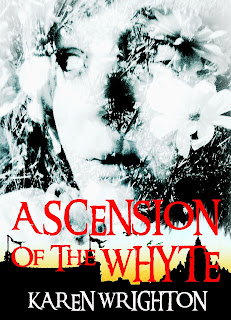Writing this book came quite naturally to me, in fact, I would say that the book seemed to write itself, but it didn't so much write itself as evolved almost in a true Darwinian fashion. It all started with a car journey, my daily commute, which is long a and tedious three-hour journey through Norfolk's slow tractor ridden country lanes.
I had been thinking about writing a book for some time and my computer was filled with half-written manuscripts and plot ideas. On this day though I had just finished reading John Green's The Fault in out Stars the night before and I was thinking about the bravery and of the young people and how they were both so desperate to discover what happened to the character in the story they were reading, who they presumed had just died. I started to think, well yes but maybe death was jot the end, it was s story after all so anything could happen! Then the image of a young girl swam into my mind. Her first day of high school, excitedly planning to attend a party with her friend, full of life, hopes, dreams and expectations, when something catastrophic happens, she is hit by a lorry and killed. What if that was not the end of the book, I thought, what if it was he beginning of an adventure.
That was the genesis of the story and before I arrived at work that day I had the framework solidly in my head. I knew the beginning; I had a great idea for a plot, and I knew how I wanted it to end now all I had to do was write it. Phew, that sounds easy when you say it quickly, but in fact, I was just about to embark on the most difficult, though most enjoyable part of this journey into authorship - planning and writing the story.
When I plan the ideas come first, sometimes from my imagination, sometimes from things I see, hear or read about and sometimes through trying to solve a problem that the plot has thrown up. The research comes next and usually the research gives me more ideas about how I can weave the information or characters into my story. For example, I needed a method of communication in the Afterlands; J K Rowling had her owls, but I was loath to use birds so I looked into communication in animals and came across the bee and how bees communicated with each other through dance.
I had already decided that some of my characters would be able to communicate with animals as well as to transform into them, so the bee made a brilliant messenger. I later discovered that in the past bees had been associated with magic, which I took as a sign that I had made the right choice.
Almost all of my planning and writing evolves in this fluid manner, my characters take me places that I hadn't intended to go. Originally I had two villains, Ka and Phlegon, but I soon realised that they were both such strong characters that the book wouldn't work with both of them in it. This gave me one big headache for a week or so until, again on my commute to work I thought that instead of killing one of them off and losing a great character what if somehow I was able to combine the two together. Phlegon was made from Fyre, so I was thinking of some melding, forging together and so I did some research and discovered how a crucible works and then the process of assimilation was born.
I don't think I could ever be that organised to sit down and plan every detail of the story before I put pen to paper, I would soon get bored. I like to build interesting characters that take me unexpected places and do unexpected things. It is what keeps me engaged with the story and hopefully keeps my readers engrossed too.
If it were to tell you how I plot in a nutshell, I would say it was seventy percent character driven, twenty percent research driven, ten percent plot driven and mostly in my head while driving through the Norfolk countryside behind a tractor travelling at 20 miles per hour.
Karen



No comments:
Post a Comment